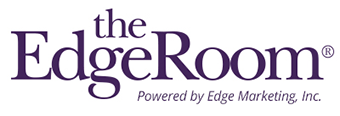by Megan Miller
You’d have to be living under a rock to have missed hearing about ChatGPT – the relatively new AI tool that has brought artificial intelligence out of the lab and into the hands of consumers, students, poets and now lawyers and accountants.
ChatGPT is a natural language processing tool driven by AI technology that allows you to have humanlike conversations and much more with a chatbot. The language model can answer questions and assist users with tasks such as composing emails, writing blog posts and generating code. Is this the new cool thing or a threat to business, professional services and marketing?
Recent headlines about AI are full of emotion. Some are bullishly optimistic:
“Best Ways to Use Generative AI in your Law Practice”
“How ChatGPT Can Improve Education, Not Threaten It”
Some sound worried:
“What Will Happen to Accounting Jobs?”
“AI Ethics a Growing Concern”
“AI Can Make New Malware”
“ChatGPT Has Pretty Depressing Thoughts About Big Law And The Billable Hour”
Some even predict a brave new world:
“ChatGPT Is a Tipping Point for AI”
“‘A Revolution in Productivity’: What ChatGPT Could Mean for Business”
How Did We Get Here?
AI tools are not new. The earliest successful AI program was written in 1951 by Christopher Strachey, director of the Programming Research Group at the University of Oxford.
Today, generative AI systems are proliferating. Generative AI can produce new content, whether as images, music or text, without being explicitly trained. Generative pretrained transformers (GPTs) are large language models (LLMs) that produce humanlike text using deep learning. ChatGPT is in the generative AI category.
ChatGPT Went Viral Quickly
Tools based on generative AI technology have been available for two or three years. Most focus on a specific audience or use case, such as visual, audio, text or code generators. Text generators include Jasper.ai, Rytr.me, Copy.ai and a number of others.
ChatGPT is not the first generative AI tool, though it is the first to win broad awareness – and likely the first to end up on late-night television. How did ChatGPT capture viral attention in late 2022? I asked ChatGPT to answer that question, and the AI engine replied (verbatim response from ChatGPT):
There are several reasons why ChatGPT went viral quickly:
- Superior performance: ChatGPT is a highly advanced AI language model that has shown impressive performance on various NLP benchmarks, including natural language understanding and text generation tasks. Its ability to understand and generate human-like responses has made it popular among users.
- Open-source availability: The source code for ChatGPT is freely available, which has made it accessible to developers who can use it to create various AI-powered applications.
- User-friendly interface: ChatGPT can be accessed through a user-friendly interface, such as chatbots and virtual assistants, which has made it easy for non-technical users to interact with the model and experience its capabilities.
- Social media promotion: ChatGPT has been promoted heavily on social media platforms, with users sharing their interactions with the model and generating buzz around its capabilities.
In a nutshell, OpenAI made GPT “friendly” on a consumer level. A free, easy to access, intuitive to use tool that is fun to play with was irresistible to early adopters and tech-curious users, who tried it, found it simple and shared the experience liberally, causing ChatGPT to go viral.
Next: Battle of the Titans
The competition between the tech giants will continue to evolve. Microsoft has invested $10 billion in ChatGPT. Microsoft’s Bing search engine is already integrated with ChatGPT. One million people have joined the waitlist for Microsoft’s AI-powered Bing. According to sources cited by The Verge, Microsoft is also preparing to demo the capabilities of OpenAI’s language technology in Word, PowerPoint, Outlook and other apps as early as March 2023.
Google – the historic king of search – responded to Microsoft’s move by introducing Bard, its rival to ChatGPT. The two will compete to define the next generation of search. Other tech leaders Apple, Nvidia and IBM plan to start making more significant and direct plays in the space.
A Healthy Field of Startups
Often the most innovative new technology is developed by unknown startups, and AI is no exception. DealRoom has identified over 210 startups in the generative AI space. Keep an eye on these – they are developing AI solutions for specific use cases and vertical markets. Some will boom on their own, and some will be acquired by bigger players.
The Game Has Just Begun
Unlike the short-lived frenzy over the metaverse, generative AI has legs. However, all the worry, concern and predictions for AI in the legal and accounting professions are premature at this point. As with most technology revolutions – and this one may drive as much change as the mobile phone revolution did – the mainstreaming of AI into our daily lives will happen in a gradual way. Markets and business practices don’t flip overnight. Stay on top of AI trends and enjoy the ride!
About the Author
Megan Miller is a senior consultant with Edge Marketing, assisting clients in development and execution of strategic marketing plans and implementation of marketing technologies. A global technology hound, Miller has built brands, trained teams and introduced successful products for global companies and startups.
A certified eDiscovery expert, Miller has written on trends and topics in electronic discovery, consumer electronics and the internet of things – before the IoT was even a thing. Her work has appeared in Attorney at Law, US Tech, TechnoLawyer, ACEDS and other industry publications.




